If you’re into health and wellness, you’ve likely heard of ginseng: a cream-colored root with a variety of purported health benefits.
As the western world’s interest in herbal medicine continues to rise, so too does the popularity of this plant.
If you’re thinking about growing ginseng for profit, now may be the perfect time to get started.
What is Ginseng?
Let’s start with the basics. There are 11 different varieties of the ginseng plant. It’s been used to treat maladies in Asia for thousands of years.
We still have a long way to go when it comes to understanding the health benefits of this herb, but there have been some scientific studies that attest to its healing properties.
For example, studies show that ginseng may increase energy, enhance cognitive function, combat inflammation, prevent flu, and lower blood sugar.
Like any other herbal supplement, you can purchase ginseng in capsule form in addition to its whole plant form.
This herb can also be used for cooking, and is often included in healing soups and tonics. It has an earthy, bittersweet taste.
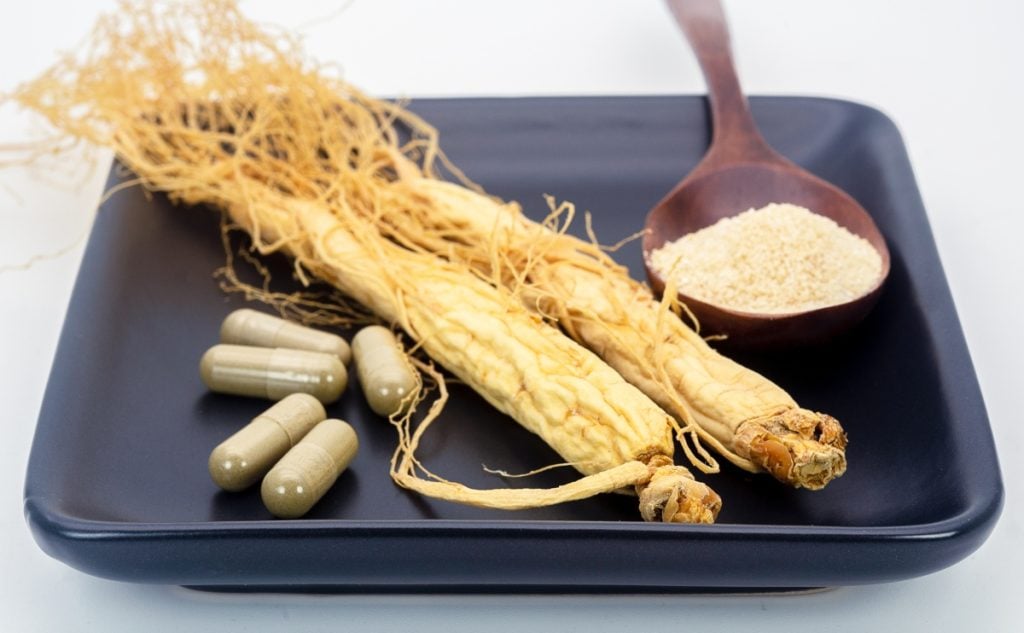
Why Should You Grow Ginseng?
Ginseng is skyrocketing in popularity—so much so that it’s being overharvested in the wild. So it goes without saying that there’s a large market for this herb.
If you happen to own land that is partially covered by woods, ginseng is also an excellent crop to plant, as it grows best in deciduous forests.
So how much money can you make growing ginseng?
Because ginseng is in such high demand, you can sell it for a relatively high price: typically $400 (£330.64) or more per pound.
And since this herb is known for its healing benefits, you can feel good about what you sell.

Who Should Grow It?
Even though ginseng is a wonderfully profitable herb, it won’t be the right choice for everyone to grow.
You’ll need to have some serious time on your hands if you want to commit to growing ginseng.
So how long does it take to grow ginseng?
The roots of this plant need to mature for about seven years before you can harvest and sell them. This isn’t a get-rich-quick crop.
That said, you can sell ginseng “rootlets” and seeds sooner than that to help supplement your income. And after your ginseng is fully mature, a half-acre of it will be worth about $100,000 (£81,450).
To have the best chance at growing healthy ginseng, you’ll also need to live in the right climate. This plant thrives the best in cool, temperate areas with significant rainfall.
If you’re in the United States, that means the Northwest, Midwest, and Northeast are good places to grow.
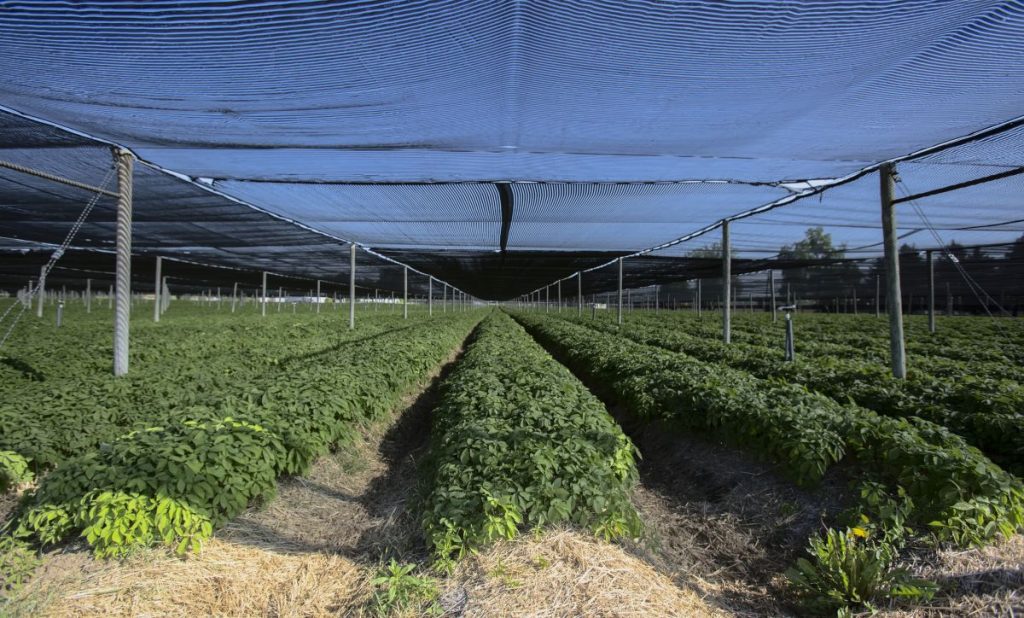
Is It Legal To Grow Ginseng?
It is legal to grow ginseng, however growth and selling of this plant is regulated by the government.
This is especially true when it comes to growing wild-simulated ginseng. This is ginseng that’s planted in the forest and allowed to grow on its own—which produces the highest-quality crops.
Ginseng growing and selling is regulated for a couple of reasons. One is that it’s a rare plant that’s worth a lot of money and is easily overharvested.
Another is that ginseng can have profound effects on human anatomy. If purveyors sell substandard ginseng, it can cause health problems in those who consume it.
However, as long as you obtain a permit and harvest ginseng according to the government’s rules, you’re in full compliance with the law and shouldn’t receive any pushback.
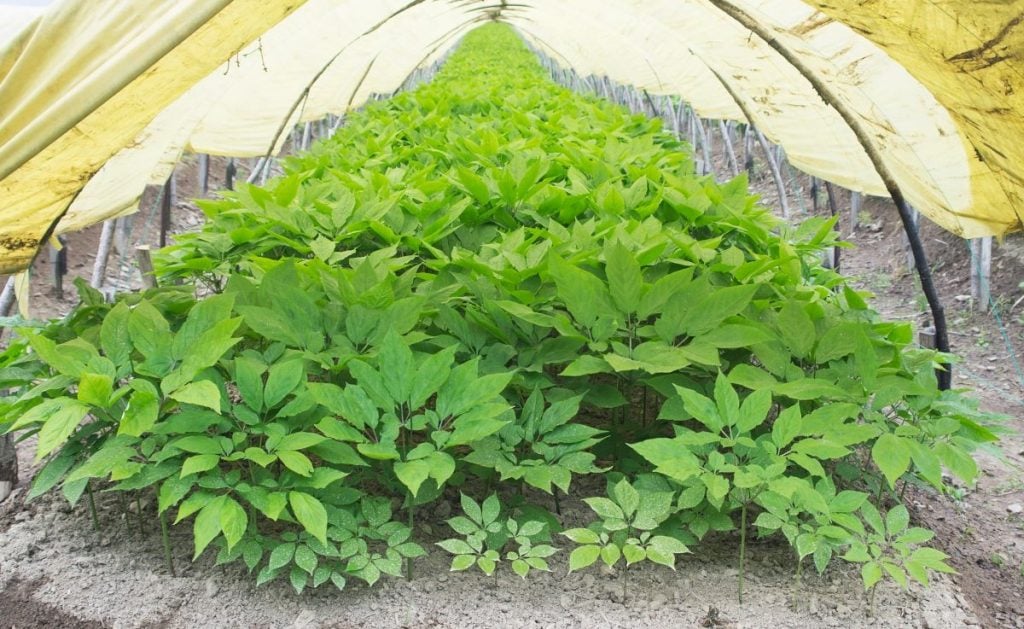
How To Grow Ginseng: Step by Step
Ready to start your own ginseng-growing business? Here’s how to do it:
Supplies needed:
- A permit to sell ginseng
- Ginseng seeds
- pH testing kit
- Fertilizer
- Mulch
- Spade
Step 1: Get a Permit to Grow Ginseng Where You Live
If you’re planning to sell the ginseng you grow, you’ll likely need a permit to do so. Contact your state’s agriculture office to learn about growth requirements and more.
Step 2: Choose a Location to Grow
Your best bet is to grow your ginseng in a forested area. If there’s already wild ginseng growing in the area, that’s a good sign!
You can also check if there are companion plants (plants that grow well with ginseng) growing in the area. These include wild yam, wild ginger, and cohosh.
If you’re not growing ginseng in a forested area, you’ll need to choose an area with high shade and moderate rainfall.
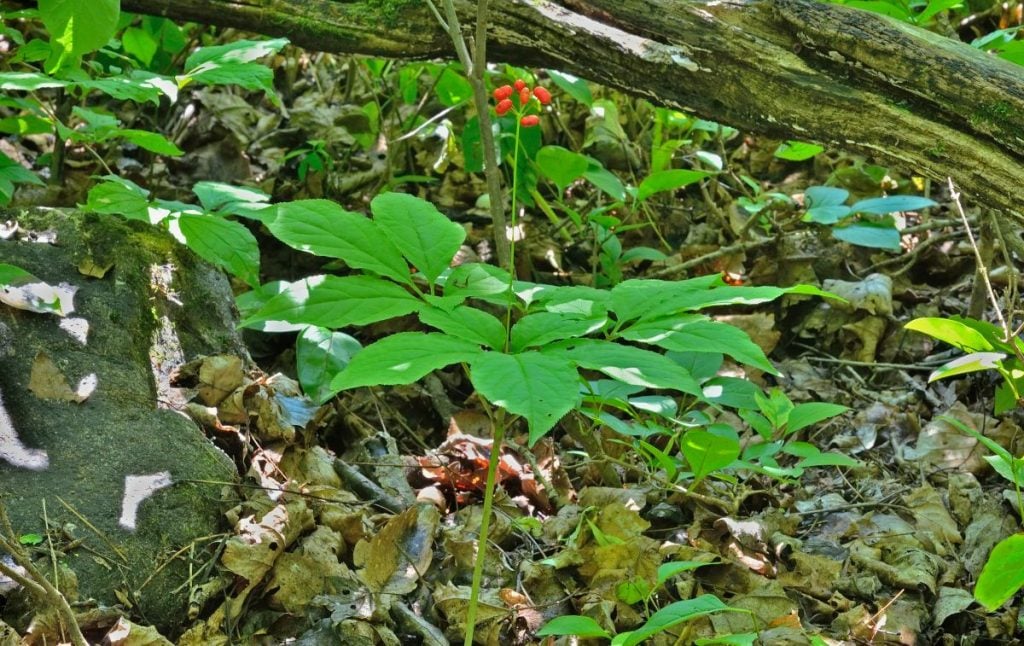
Soil needs
Regardless of where you grow your ginseng, the soil will need to be moist, loamy and quick-draining.
You may want to test the pH of your soil—it should be between 4 and 7—and add fertilizer to adjust it if necessary.
You may even want to send your soil into a lab to test for phosphorus and calcium levels, as too-low levels of these minerals can lead to slow growing and undersized roots.
While this may seem like a lot of extra effort, you don’t want to invest years into growing ginseng in unsuitable soil. So it’s best to do your research ahead of time.
Step 4: Get Your Ginseng Seeds
You can try harvesting ginseng yourself for seeds, but chances are it will be very hard to find.
There are also laws prohibiting the harvesting of wild ginseng in some places, so check your local laws before searching.
The most reliable way to get ginseng seeds is online or from a local grower. You should order these seeds in the summer so that you get the best-quality ones when fall arrives.
If you’re holding on to your seeds for a while before planting them, keep them in the refrigerator and mist them once per week.
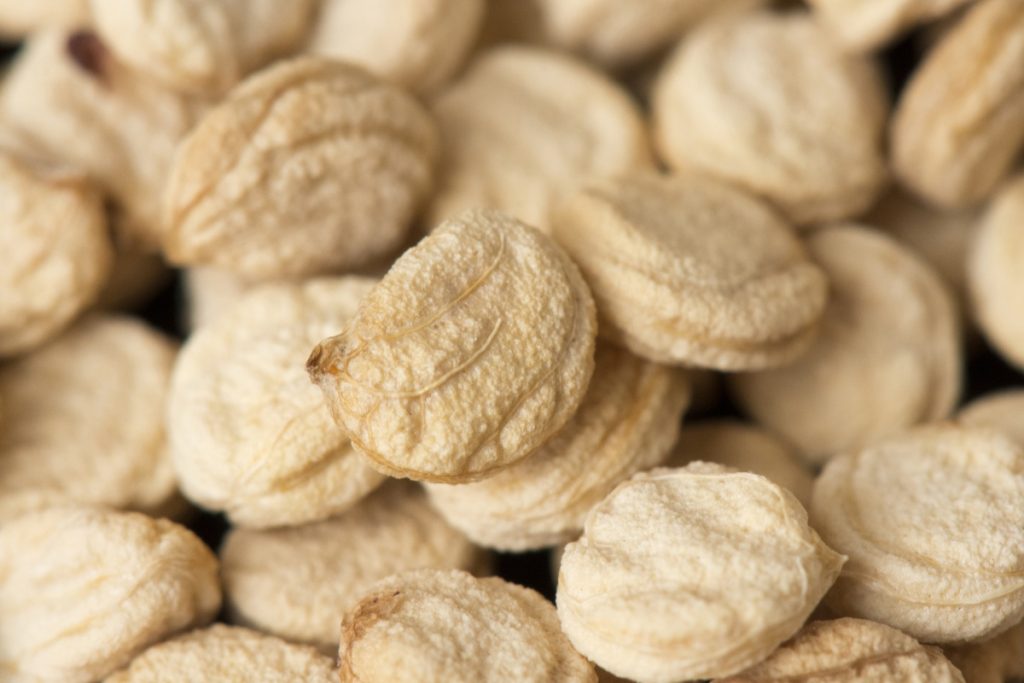
Step 5: Plant Your Seeds
Because ginseng seeds are prone to fungus, you’ll want to soak them in a solution of 9 parts water and 1 part bleach prior to planting them.
Soak the seeds for 10 minutes and discard any seeds that float to the top, then rinse the remaining seeds in clean water before planting.
Fall is the best time to sow your ginseng seeds. You can technically plant the seeds as late as early winter, but you’ll want to do it before the ground freezes.
Try to plant your seeds after it has rained so the soil is moist. You should also remove any underbrush that may compete with your ginseng prior to planting.
Ferns and ginseng do not grow well together, so remove any ferns if they’re growing near your planting area.
Typically, if you’re growing wild-simulated ginseng in the forest, you can simply scatter the seed about your planting area without too much thought. (Just aim for roughly 10 seeds/square foot.)
If you have fewer seeds or want to be more intentional with your placement, plant the seeds about 7 inches (17.78 cm) apart to reduce the chance of disease spreading.
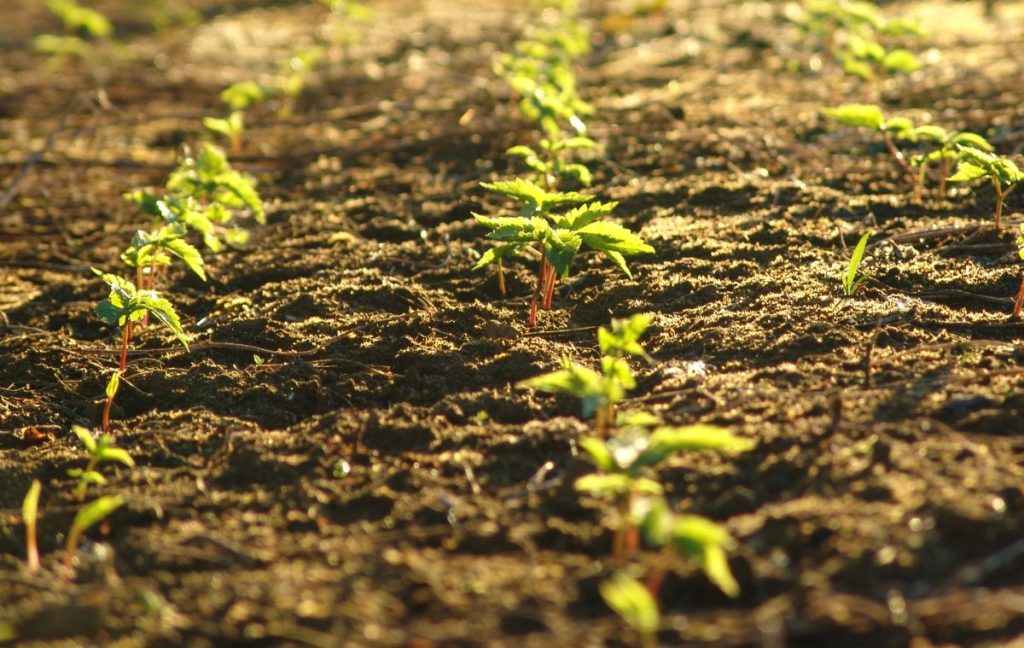
Step 6: Cover Your Seeds with Mulch
In order to keep the soil moist, you’ll need to either cover it with a layer (up to 2 inches/5.08cm) of mulch, or if you’re planting in the woods, a layer of leaves.
Just be sure not to use oak leaves, as these are too tough for your fragile ginseng sprouts to grow through.
Step 7: Mark Where You Planted Your Ginseng
Especially if you’re growing your ginseng in the woods, you’ll need to demarcate where you’ve planted it.
However, since ginseng is a very lucrative crop, there’s a chance that visible markers (such as small flags) may tempt thieves to steal your ginseng.
For this reason, we recommend using a GPS app on your phone to note exactly where your ginseng is planted.

Step 8: Harvest Your Ginseng.
Most types of ginseng will need to grow for seven years before you can harvest them.
When you’re ready, use a spade to dig out your ginseng root, taking care not to damage the plant.
Because the ginseng root grows in many directions, dig carefully to ensure you don’t break any of it.
Once you’ve harvested your ginseng, you can wash it gently (avoid scrubbing) and allow it to air-dry.
Tips for Caring for Your Ginseng Each Year
Because your ginseng will take several years to grow, you’ll need to commit to regular annual care.
Here are a few tasks to put on your calendar:
- Thin your ginseng annually to ensure that there are just 6 plants per square foot (65 per square meter). This reduces the likelihood that disease will spread and stops the plants from competing with each other for nutrients.
- Make sure your soil remains moist and covered in leaves or mulch.
- When your ginseng plant is about three years old, it will begin producing berries. You can harvest these and sell the seeds they contain.
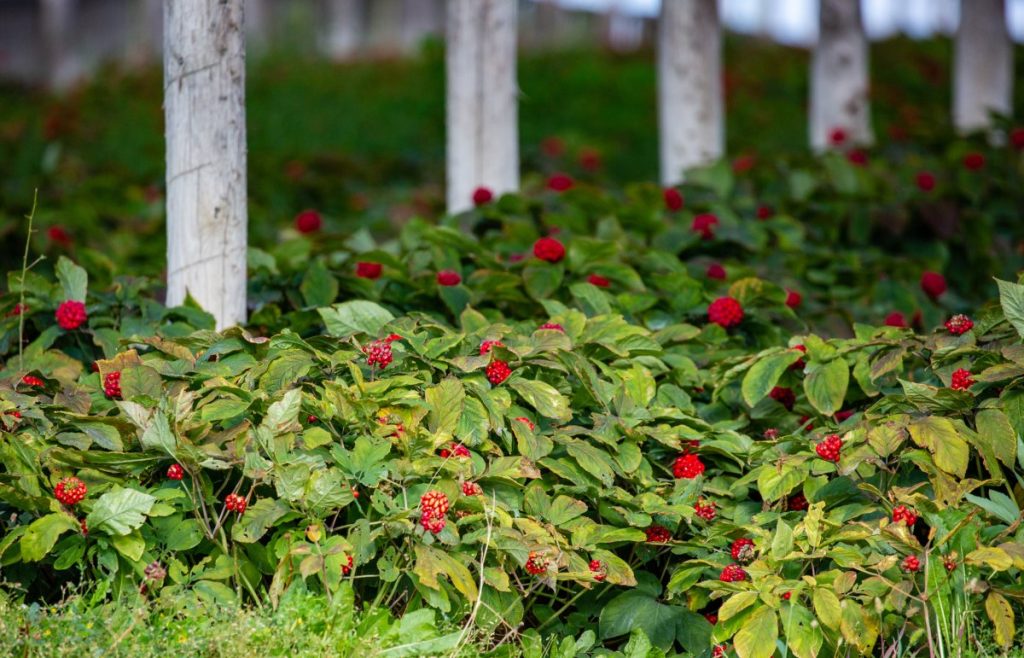
Selling Your Ginseng
When you’re ready to sell your ginseng, you can sell your plants to licensed ginseng dealers. Or, you can get licensed to sell the ginseng yourself.
The requirements to sell ginseng vary based on where you live, so contact your state’s agricultural department for more information.
Final Thoughts
If you have enough time and the appropriate growing conditions, ginseng can be a remarkably profitable crop to sell.
If you do decide to grow ginseng for profit, we recommend growing a couple of other crops along with it, since you won’t see a return on your investment in ginseng for several years.
If you’d like to learn more about growing crops for profit, check out our articles on growing herbs and growing lavender for profit.
